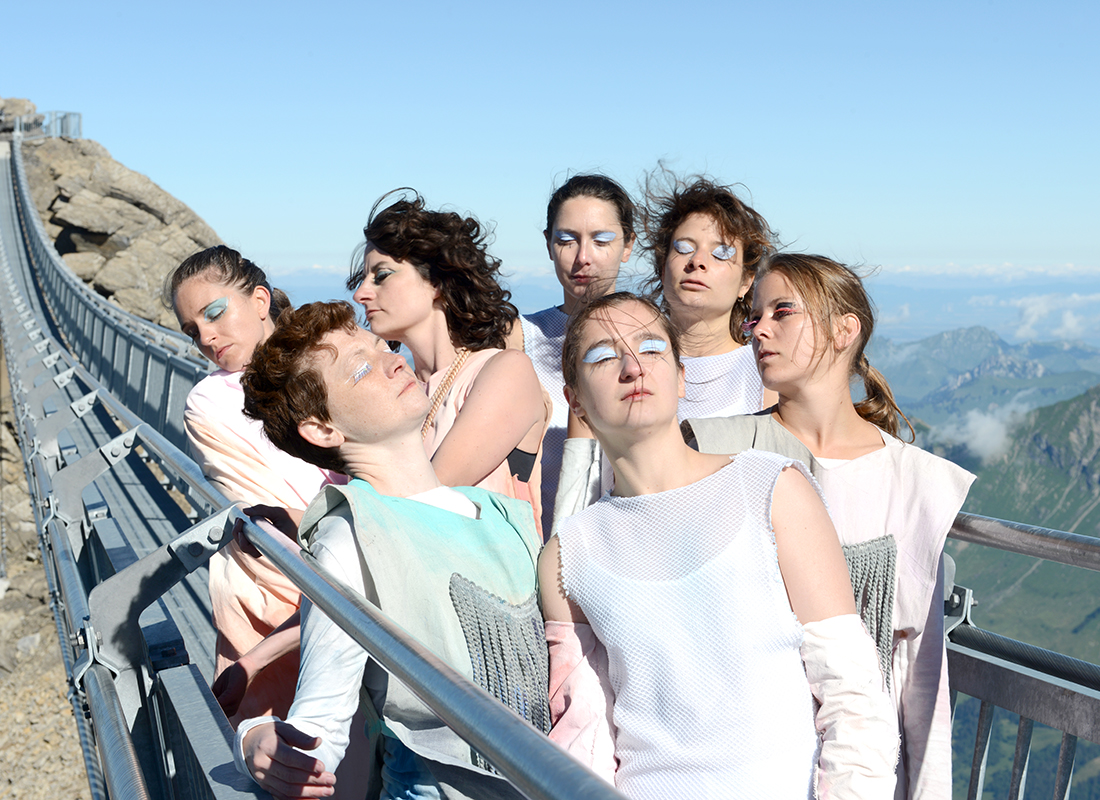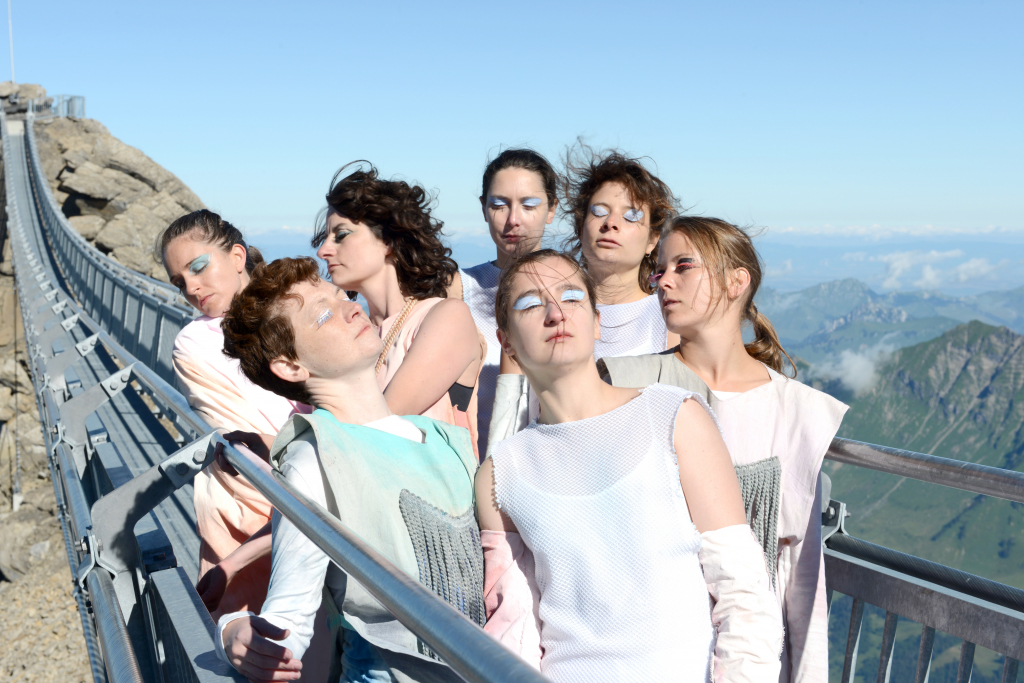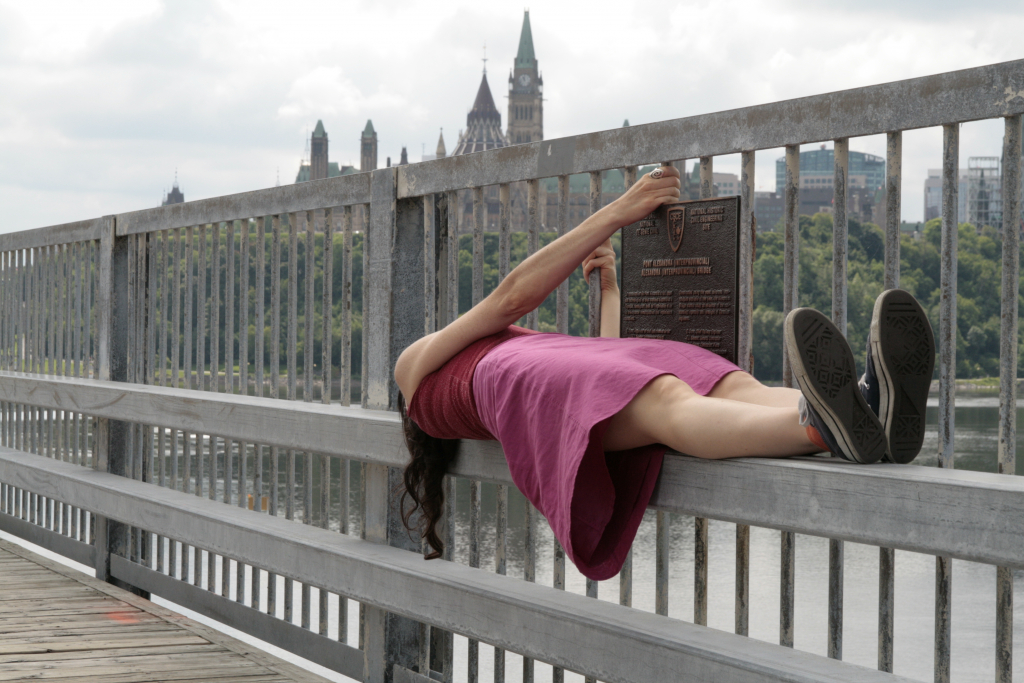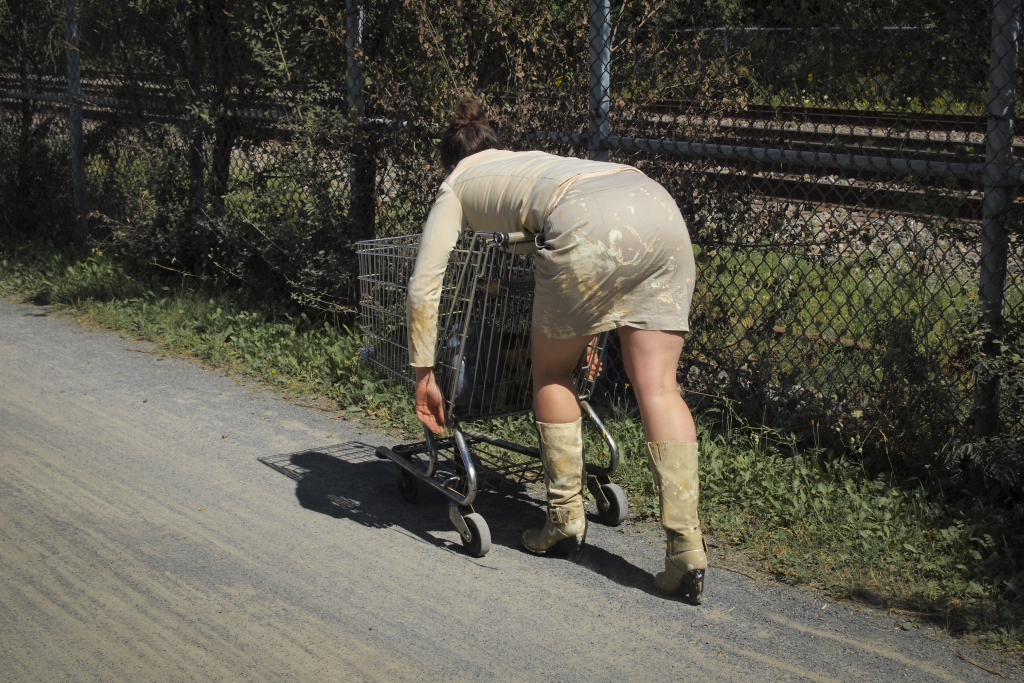Motionless Bodies in a World on the Go
The theme Faire Statue (Statue Play) is the special topic for this collection of essays that inaugurates the 30th anniversary of ESPACE art actuel magazine. Co-directed by Mélanie Boucher, a member of the editorial committee, this issue is concerned mainly with performance acts in which artists identify body and soul with certain aspects of statuary. This artistic position is present certainly in the performance works of numerous contemporary artists, but our essays also recall that this kind of work was often staged during the 1960s. On these occasions and depending on the poses taken, performers would appropriate the formal language of sculpture and its exhibition setting. Holding a position over a period of time, the artist’s body inevitably experiences the pull between immobility and mobility. But what is the point of these motionless bodies in a world where “global mobilisation”1 is rife?
The duo Gilbert & George, made up and in costume, standing on plinths or other pedestals in The Singing Sculpture, seem for the first time to have experimented deliberately with this tension that is produced between an inanimate and an animate body. However, they were not the very first artists to integrate the idea of the reified body into their practice. Yoko Ono’s Cut Piece, Joseph Beuys’ How to Explain a Picture to a Dead Hare and Günter Brus’ Vienna Walk are examples of works by an earlier generation of artists whose performances can be viewed in relation to sculpture. Certainly one can go back even to the works of early avant-garde artists such as Hugo Ball’s Karawane, and indeed to Emma Hamilton’s salon entertainments, her Attitudes or to the royal entrances of the Middle Ages to find the origin of this practice in which the subjects not only project themselves onto an object but put themselves forward as a substitute. The performances in which individuals are impassive and inordinately large, in which they interact with real sculptures or their copies, are numerous today: they sometimes are even presented next to museum objects, labeled and under glass, institutionalising a current practice that until recently was developed essentially on the margins or in reaction to the museum. In 1991, for The Physical Self, an exhibition at Museum Boijmans Van Beuningen in Rotterdam, filmmaker Peter Greenaway presented nude performers in boxes alongside the museum collection, showing this turning point in the museum. In 2010, for The Artist is Present at MoMA in New York, Marina Abramović asserted this interest in exhibiting the performing body by sitting there motionless for more than 15 days.
Faced with these works that invite rethinking the history of performance art and its relation to other disciplines and its modes of presentation, several questions are raised. What are the source and evolution of this practice of reifying the subject? What is the relationship to pantomime? And what might be the motives that lead performers to play being statues? The expression of permanence that simulates the mortal being, does it not invite us to view the produced work from psychological, philosophical and anthropological angles? Could there be a link between the consistent practice of preserving objects and reifying the body? And how does this fantasy about a statue that comes to life, from the Pygmalion myth, enter into the performance of the works? The essays in this collection explore the many aspects that these questions raise.
For Pierre Saurisse, some of the 1990s performance practices recall the actions of the 1970s in which the body’s immobility in a situation calls for endurance, while the performer hesitates between his/ her status of being human and that of the art object. For Anna Dezeuze, the transformation of the human body into sculpture is to recall philosopher Henri Bergson’s analysis on laughter. But as well as the comic nature of this sculptural presentation, the relation between the body and sculpture in contemporary art can also be considered, according the author, as a way of confronting one’s inertia. Ersy Contogouris’ text analyzes A Needle Woman by artist Kimsooja, originally from Korea, and enters it into dialogue with the work of Emma Hamilton “the foremother of performance art.” She also is interested in the “potential of the transfixed body” in face of the viewers’ various reactions. Through the intervention of two performances, Gathie Falk’s Red Angel created for the first time in 1972 and Megan Rooney’s Last Days. Last Days. Last Days, presented in 2015, Mélanie Boucher analyzes performances in which movements reveal “the active power of inaction.” Jeremy Gafas, in his text examines “the apathetic use of the body” in performance works and how this has enabled new kinds of relations “between the human body and the object.” Pushing the immobility of the body to the extreme, some artist would like to exhibit a corpse, perhaps their own. In her text, Camille Paulham analyzes art projects having to do with “cadaverous sculptures” such as that of Alan Sonfist. Finally, Julie Richard presents Marie-Claude Gendron’s performance Nos Terres Louables carried out at Malartic, a small mining town in northwestern Quebec in Abitibi-Témiscamingue. The writer emphasizes that this voluntary immobility is an act of peaceful resistance and above all must not be confused with failure to act.
In the “Interview” section, Sylvie Tourangeau’s text Le pouvoir de l’immobilité completes this collection of thematic essays. In interviews with artists Julie Laurin, Nicole Panneton and Victoria Stanton, it is the aesthetic experiences that result from performances in which the body is at rest that point towards “good mobility.”2 In the “Events” section, given over to Steve Giasson’s Performances invisibles, Nicolas Rivard analyzes the “micro-political” nature of this project that occupied the artist for a whole year. Lastly, the image on the magazine cover is from a performance that artist Megan Rooney orchestrated, and Boucher writes about in her text. Produced in Gstaad in collaboration with Nefeli Skarmea, a London choreographer, this performance took place on a suspension bridge linking two summits in the Swiss Alps.3 Seven performers carried out the performance f on your tongue, moving slowly above the void and reciting a text Rooney had written. Within this sublime environment, the bodies, like in a pantomime, were engaged in an exacting activity. It is this e ort, among other things, that made Peter Sloterdijk say that the history of modern art not only appears in the form of a history of artworks, but should also be interpreted as being “a branch of the general history of exercise and training.”4
As always, this issue keeps some of its pages for reviews of exhibitions and books. One of the exhibition reviews is on Le meilleur des mondes the 7th edition of the Biennale nationale de sculpture contemporaine de Trois-Rivières.
Translated by Janet Logan
- Peter Sloterdijk, La mobilisation infinie. Vers une critique de la cinétique politique, Paris, Éd. Christian Bourgois, 2000, 13.
- “The one who knows the meaning of rest, is the only one who has the criterion for good mobility.” Ibid., 328. (our translation)
- This performance work was commissioned by the LUMA foundation for Project 1049. It was produced on
September 14, 2016 on Glacier 3000. The performers were Krisztina Abranyi, Anna-Marija Adomaityte, Virginia Ariu, Audrey Dionis, Alice Evensen, Nefeli Skarmea, Magaly Tornay and Megan Rooney. Alice Evensen designed the costumes and Megan Rooney painted them. - Peter Sloterdijk, You Must Change Your Life, trans Wieland Hoban, Cambridge: Polity Press, 2013.









